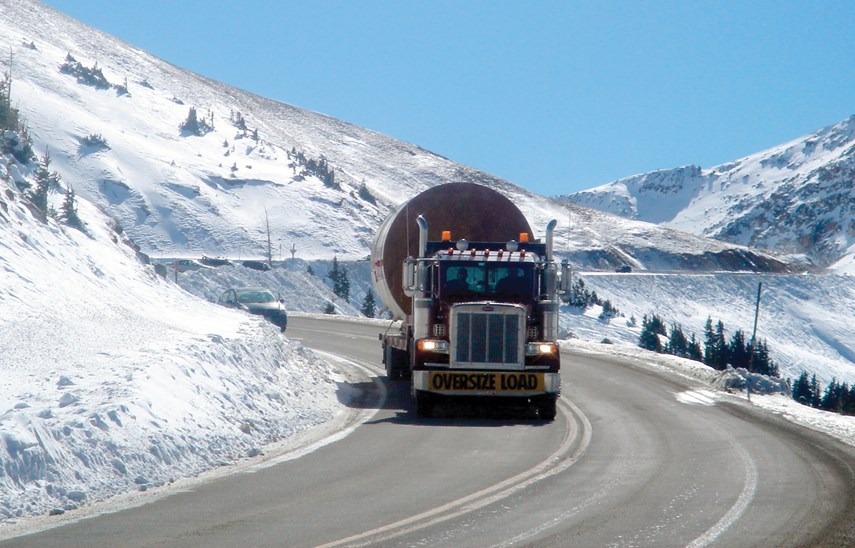Last weekend saw the small town of Sicamous temporarily inundated with travellers, as a fatal collision just a few kilometres east saw the Trans-Canada Highway closed for seven hours.
I happened to be among those stranded, as part of a classic car tour trying to make its way to Revelstoke for the night.
Few people complained, because we knew someone had died. When you’re out on the roads in a fragile car from a previous age, you tend to adopt the same mindset as a motorcyclist. It could have been me. Thank goodness it wasn’t this time.
The crash in question falls into an all-too-familiar formula: a semi-trailer hitting a car going in the opposite direction. Investigators have yet to assign blame, but the physics are pretty brutal. When a car and a semi-trailer go head to head, people die. Truck collisions are relatively rare (less than 1 per cent in B.C.), but they account for one-fifth of all road fatalities in the province.
You shouldn’t just blame the truckers. Just last year, a similar crash near Sicamous killed a 55 year old man when his F-250 crossed a double yellow line. In fact, studies suggest that approximately two-thirds of these types of collisions are the fault of passenger-car drivers.
However, speaking purely from observation, it does seem like truck traffic on our roads is increasing daily. Further, it also feels like the standard of driving we’re seeing is dropping just as fast in trucks as it is among the general populace.
On a recent drive down the Fraser Canyon, I found myself dealing with heavy rainfall and limited visibility. I was in a Toyota RAV4 at the time, which is a perfectly competent machine for this sort of weather, but I backed off the throttle nonetheless, leaving something of a margin of error should the wheels hydroplane over an unexpected rut in the road.
Nearly without exception, none of the semi-trailers on the road did the same. Even fully laden, some of these things were traveling downhill in the rain well in excess of the speed limit. I saw two separate incidents where drivers put wheels out of their lanes as the curves tightened.
Scary stuff, but at least that was in daylight. In Sicamous, with the road finally opening around 11:15 p.m., I watched frustrated truckers drive up to within a single car-lengths of passenger cars, running nose-to-tail through the dark at 80 kilometres per hour. With the headlights of the huge lineup of traffic going the other direction hurting your night vision, the margin of error dropped to near zero.
Now, these are mere personal experiences, and a general trend cannot be inferred. However, if we simply rely on the cold calculation of percentages, growing truck traffic on our roads will lead to more novice truck drivers, more negative truck-car interactions and, ultimately, more fatalities.
Speed limiting devices for transports and lower speed limits for trucks have both been proven to be effective tools when deployed in the United States. Approximately one third of U.S. states have slower limits for trucks in certain areas. However, it’s even more effective when we all slow down.
As drivers, we can protect ourselves to an extent by not driving alongside semi-trailers when possible, and by always keeping some kind of escape avenue open, especially on two-lane roads. The general rules of defensive driving apply, and if you can’t stay alert enough to expect the unexpected, it’s time to pull over for a coffee. You should also remember that a truck can’t stop, turn, or brake as well as your car, and in any argument between you and the truck, your car will lose. I feel for responsible truckers – I’ve seen how utterly stupid people can be around them, and I know their days are filled with near-misses caused by passenger cars who cut them off and just generally behave like idiots.
There’s also the sense that there’s a race to the bottom in all types of transportation, from shipping to trucking, with logistics companies pushing right up to the edges of legislation and enforcement. There are still plenty of professional, conscientious truck drivers out there, but if even a small percentage are less than professional, then that’s a danger.
I don’t necessarily want you to be afraid of trucks, but you should respect the amount of inertia they carry, and be wary around them. Don’t make their lives more difficult, and don’t push the boundaries trying to pass them. Even if the driver is quick behind the wheel, the truck can’t react that fast.
And lastly, a further note of caution as we seem to be headed toward a summer of high fuel prices brought on by the pipeline debacle. Even as the price of fuel increases in B.C., a surplus in Alberta will push costs down. As the variance between our two provinces increases, it becomes more profitable to transport that oil by rail and by truck. Traffic increases further, especially in the mountain passes.
It’s going to be a long, hot, busy summer on B.C.’s roads. Let’s all try to stay safe out there.
Brendan McAleer is a freelance writer and automotive enthusiast. If you have a suggestion for a column, or would be interested in having your car club featured, please contact him at [email protected]. Follow Brendan on Twitter: @brendan_mcaleer.



